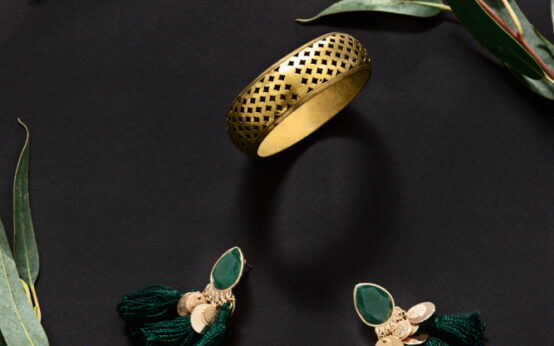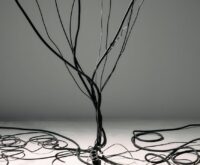Fashion is an ever-evolving and ever-changing industry, with trends coming and going. However, there are some fashion icons from past decades who continue to inspire us to this day. From Jackie O to Marilyn Monroe, these female fashion icons have left an indelible mark on the industry. In this article, we will take a journey through time and explore the top fashion icons categorized by decade. So, let’s dive in and discover the evolution of style!
1910s: The Edwardian Era
The 1910s were a time of conservatism in both politics and fashion. Dresses were loose-fitting, and hats were a must-have accessory. Lace was the fabric of choice, and waistlines were cinched with sashes. One notable fashion icon of this decade was Denise Poiret, the wife of French fashion designer Paul Poiret. Denise served as a muse for her husband and inspired his empire line dresses and chemise dresses. Her slim and natural body became the embodiment of Poiret’s designs, and her impact on women of the time was significant.
1920s: The Roaring Twenties
The 1920s marked a period of post-war liberation and a departure from the restrictive fashions of the past. The flapper dress became the epitome of 1920s fashion, with its drop waist and embellishments symbolizing the extravagance of the era. One fashion icon of this decade was Katherine Hepburn. Known for her fearless style, she effortlessly combined evening gowns with menswear-inspired blazers, trousers, and collared shirts. Katherine Hepburn’s fashion choices normalized the tomboy style and continue to inspire modern-day fashionistas.
Another notable fashion icon of the 1920s was Josephine Baker, an African American entertainer and civil rights activist. Known for her distinct and erotic beauty, Josephine captivated audiences with her show-stopping performances and unique style. Her iconic banana skirt made with rubber bananas and minimal accessories became the epitome of the roaring ’20s fashion.
1930s: The Golden Age of Glamour
The 1930s was a challenging decade for most, with the Great Crash of 1929 impacting the economy and fashion industry. However, this era was also known as the Golden Age of Glamour, with silk, velvet, and chiffon evening gowns gaining popularity. One fashion icon of this decade was Lupe Velez, a Mexican actress known for her feminine yet erotic silhouettes. Lupe’s style was influenced by her defiance of tradition and conventionality. She embraced body-hugging dresses, plunging necklines, and cut-out designs. Lupe Velez’s style is still relevant today, with bodycon dresses and v-neck bodysuits making a comeback.
1940s: The War Era
The 1940s witnessed a shift in fashion due to the wartime rations and the need for practicality. Women often wore a-line button-up dresses with puffed sleeves and simple heels. One fashion icon of this decade was Dorothy Dandridge, known for her elegance, class, and timeless beauty. Dorothy knew how to highlight her best features and was often seen wearing the “popping collar” and off-shoulder bodycon dresses. She understood the power of accessories and used belts, scarves, and bracelets to accentuate her features. Dorothy Dandridge’s confidence and authenticity captivated the fashion industry and continue to inspire women today.
1950s: The Feminine Era
The 1950s brought a return to femininity after the war years. Swinging skirts and an hourglass shape became popular, with tulle and chiffon adding volume and emphasizing the waist. One fashion icon of this decade was Lucille Ball, known for her casual American style. She effortlessly rocked collared fit-and-flare dresses, dainty aprons, cuffed jeans, and flats. Lucille Ball’s charm and versatility allowed her to switch between sweet and flirty looks and girl boss ensembles. Her style is still popular today, with thrift stores offering vintage-inspired pieces that capture her timeless charm.
Another iconic fashion icon of the 1950s was Bettie Page, known as the “Queen of Pin-Up.” Her daring and erotic style made her one of the most influential fashion icons of the decade. Bettie’s pin-up swimsuits, lingerie, and floral bodycon dresses continue to inspire youthful and feminine brands. Celebrities like Katy Perry have imitated her style in music videos, further solidifying her influence in the fashion industry.
Grace Kelly, the first American princess, also left a lasting impact on fashion in the 1950s. Known for her poise and elegance, Grace understood the power of simplicity. She favored clothes that perfectly fit her body and believed that a single pearl necklace or a pair of diamond earrings could enhance any outfit. Grace Kelly’s style remains timeless, with black bodysuits, printed A-line skirts, and peep-toe heels capturing her effortlessly polished look.
And of course, who can forget Marilyn Monroe? Marilyn’s sultry and impeccable style made her one of the most iconic women in history. Her platinum blonde curls, red lips, and figure-hugging dresses became her trademark. Marilyn Monroe’s influence on fashion is still evident today, with her signature looks continuing to inspire the youth.
1960s: The Swinging Sixties
The 1960s were a time of freedom and social change, reflected in the fashion trends of the era. The miniskirt became a major trend, with hemlines rising and the youth embracing a more casual and carefree style. One fashion icon of this decade was Janis Joplin, an American singer-songwriter known for her hippie feminist style. Janis was a true free spirit, unafraid to experiment with layers and mix masculine and feminine fashion. Loose garments, layered jewelry, feather accents, and bright colors defined her unique wardrobe palette.
Cher, the Goddess of Pop, also made a significant impact on fashion in the 1960s. Known for her independent, strong, and sexy persona, Cher embraced reconstructed corsets, taffeta trains, and flashy glitter. She also effortlessly rocked bohemian-inspired looks with mini dresses, crochet pieces, and fringe vests. Cher’s edgy and rocking style matched her exotic look and fighting personality, making her one of the top fashion icons of the decade.
Brigitte Bardot, the French “It girl” of the 1960s, captivated the fashion industry with her dark eyes and appealing kitten looks. Brigitte’s ballet background and slim figure allowed her to pull off curve-complimenting and elegant looks. Her form-fitting ensembles and short dresses exuded confidence and became the epitome of French chic.
And who can forget Audrey Hepburn? Hailed as one of the greatest female screen legends, Audrey’s effortless style and timeless beauty made her a fashion icon of the 1960s. Her iconic little black dress designed by Hubert de Givenchy in the film “Breakfast at Tiffany’s” remains one of the most recognizable looks in fashion history. Audrey’s chic signature looks, including Capri trousers, high-neck tops, scarves, and elegantly tailored blazers, continue to inspire women today.
Jackie Kennedy Onassis, America’s First Lady of Style, also made a significant impact on fashion in the 1960s. Her classy and elegant personality was reflected in her tailored dresses, skirts, suits, and blouses. Jackie’s preppy style and influential position as the First Lady solidified her place as one of the most important fashion icons of the decade. Her looks are still popular today, with cardigans tied on the shoulder and sleek tailored dresses capturing her effortlessly polished style.
1970s: The Stylish Decade
The 1970s were a time of unique styles and trends, with fashion taking a turn towards the bohemian and disco-inspired looks. Autumnal colors dominated the fashion scene, with dark greens, browns, and oranges making a statement. One fashion icon of this decade was Jane Birkin, known for her girl-next-door style. As a singer and actress, Jane’s off-duty casual style captured the eyes of the industry. She embraced simplicity and sexiness, often seen in oversized vintage graphic tees, reconstructed skinny jeans, and leather moto jackets.
Diana Ross, the lead singer of the Supremes, brought glamour and sophistication to the 1970s fashion scene. Her oversized, dramatic, and retro style earned her the title of a “fashion leader.” Diana’s use of glitter, bejeweled dresses, and vibrant colors made her one of the top fashion icons of the decade.
Debbie Harry, the lead vocalist of the band Blondie, embodied the edgy rock and roll style of the 1970s. Her pin-up swimsuits, lingerie, and floral bodycon dresses made her one of the top female fashion icons of the decade. Her individualistic and creative style influenced fashion designers and celebrities, including Katy Perry and Madonna.
1980s: The Decade of Excess
The 1980s were a time of extravagance and bold fashion choices. Denim and leather jackets were everywhere, and double denim became a popular trend. Shoulder pads, bright colors, and perms were also iconic elements of the 80s fashion scene. One fashion icon of this decade was Princess Diana, who became known for her grit and style. She effortlessly rocked sweater-and-biker shorts ensembles, pantsuits, and cowboy boots. Princess Diana’s street-style queen status continues to inspire women and designers in the fashion industry.
Madonna, the Queen of Pop, was one of the first icons to embrace the underwear-as-outerwear trend. Her ever-changing, experimental, and transformative style made her a fashion icon of the 80s. Madonna’s fearless approach to fashion inspired women to break the rules and express themselves through their clothing choices.
Elizabeth Taylor, known for her fearless and over-the-top style, left a lasting impact on fashion in the 1980s. Plunging necklines, fur wraps, feather boas, and extravagant headpieces were all part of Elizabeth’s glamorous wardrobe. Her unique fashion choices may have been considered over-the-top by today’s standards, but her influence on the industry remains undeniable.
1990s: The Minimalist Era
The 1990s marked a shift towards simplicity and minimalism in fashion. Sleek slip dresses made of satin became the iconic look of the decade. Midi skirts and dresses became a staple for both casual and formal occasions. One fashion icon of this decade was Winona Ryder, the “Godmother of Grunge.” She embraced the sassy, over-the-top, and flirty style that defined the 90s. Winona’s love for black and well-worn pieces made her a fashion inspiration for many.
Alicia Silverstone, known for her role in the film “Clueless,” became a fashion icon of the 90s. Her schoolgirl blazer-and-skirt ensembles, knee-high boots, and sultry argyle style captured the essence of 90s fashion. Alicia’s massive film popularity solidified her place as one of the top celebrity fashion icons of the decade.
2000s: The Pop Culture Era
The 2000s were a time of pop culture dominance and a fusion of previous eras’ fashion trends. Low-rise and bootcut jeans, small kitten heels, and halter neck tops were popular choices. The revival of tracksuits, inspired by the 80s, gained popularity, with Juicy Couture becoming a prominent brand. One fashion icon of the early 2000s was Paris Hilton, whose sassy and over-the-top style made her an influential figure. Her love for flashy graphics and bold logos defined the fashion culture of the time.
Mary-Kate and Ashley Olsen, former child film stars turned fashion icons, embraced the sleek boho aesthetic of the late ’90s and early 2000s. Their love for oversized clothes and layering captured the attention of the fashion industry. Despite their petite frames, the Olsen twins showed that they could “take up space” through their unique and authentic fashion choices.
In conclusion, the fashion icons of each decade have left a lasting impact on the industry and continue to inspire designers and fashion enthusiasts today. From the elegant and sophisticated styles of Grace Kelly and Audrey Hepburn to the bold and edgy looks of Madonna and Debbie Harry, these icons have shaped the way we dress and express ourselves through fashion. As we continue to evolve, we can look back at the fashion icons of the past and find inspiration for our own personal style.



 Teslatoto: Your Ultimate Online Gaming Experience
Teslatoto: Your Ultimate Online Gaming Experience  Elevate Your Look with Accessories: The Power of Statement Pieces
Elevate Your Look with Accessories: The Power of Statement Pieces  Backtest Crypto Trading Strategies: A Complete Guide
Backtest Crypto Trading Strategies: A Complete Guide  NFT Standards: A Cross-Chain Guide for Creators & Collectors
NFT Standards: A Cross-Chain Guide for Creators & Collectors  Decentralized Storage: IPFS & Arweave Explained Simply
Decentralized Storage: IPFS & Arweave Explained Simply  How to Calculate Cryptocurrency Taxes: A Simple Guide
How to Calculate Cryptocurrency Taxes: A Simple Guide  Your Guide to Music NFTs & Top Platforms for 2024
Your Guide to Music NFTs & Top Platforms for 2024  TradingView for Crypto: The Ultimate Trader’s Guide
TradingView for Crypto: The Ultimate Trader’s Guide